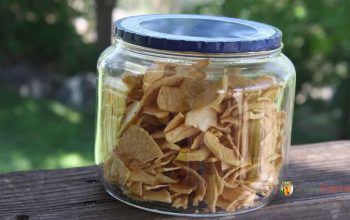If there’s one thing that is guaranteed to send shivers down the spine of even the most experienced trekker, it’s the sight of a venomous snake.
Every year in North America, there are a reported 8,000 bites by venomous snakes – and the figures unreported bites are thought to be much higher. This might sound like a startlingly large number, however, the truth is that very few of these bites result in death. In fact, it is estimated that there just five fatalities per year. To put things into perspective, you are nine times more likely to be killed by lightning than a snake.
That said, it doesn’t mean you should become complacent around snakes, as they are still very capable of delivering a damaging bite. Although death is unlikely, being bitten by a venomous snake can result in breathing difficulty, blurred vision, and potentially even temporary paralysis.
In this guide, we’re going to cover everything you need to know while wandering through snake country. We’ll go through effective preventative measures, snake identification, and what you should do in the unlikely event of a bite.
Identifying Snakes and Myth Busting
First things first, let’s tackle the many myths that are abound when it comes to snakes. Whether it’s because someone is quoting an antiquated piece of advice they found in a magazine from the 1970s or are unscrupulously trying to sell you a useless snakebite kit, there are plenty of untruths floating around online.
Slit-Shaped Eyes = Venom?
One of the most commonly known identifiers of a venomous snake is the shape of its eyes. Many people believe that a venomous snake has slit-shaped eyes. That’s not necessarily true.
A 2010 study found that there is absolutely no correlation between the presence of venom and pupil shape. In fact, it was found that pupil shape might be determined by its predatory/foraging behavior.
Do Snake Bite Kits Work? (TLDR: NO!)
This is a particular bugbear for serious trekkers and snake enthusiasts alike. When it comes to venom treatment, snakebite kits are probably one of the biggest scams out there. These kits simply don’t work. Not only that, they’re potentially extremely dangerous.
Let’s have a look at one of the more popular kits out there: the Sawyer Extractor Pump. Full of 5-star reviews and first-rate sales copy, a medical study from 2004 concluded that the pump removes virtually no venom.
These kits will, for example, work for less serious bites. Think bees or wasps, but not snakes. In fact, using these kits can actually increase local tissue damage by concentrating the venom. Not only that, you’re also going to significantly increase the chance of an infection developing.
Identifying Snakes
One of the most important things you can do when it comes to avoiding a bite is learning how to identify a venomous snake and taking a moment to learn some of its most common behaviors.
There are four main species of venomous snake in North America, each with their own unique markings. Additionally, each species comes with its specific behaviors and having an awareness of this can help you when you’re preparing an outing.
Coral Snake
The coral snake is one of the most identifiable of the deadly snakes, so long as you can correctly remember the following saying: ‘red and yellow, kill a fellow; red and black, friend of Jack’. The saying refers to the colored banding on the snake. If the red and yellow bands are together, then you know you’ve got a venomous snake on your hands.
The coral snake tends to be found in forested areas, hiding under leaves or underground. Knowing this will make you aware when walking on or near piles of leaves. It generally displays reclusive behavior i.e. it will retreat unless provoked. In other words, if you stay out of its way, a bite is highly unlikely.
Rattlesnake
This is the most widely known species of venomous snake and is primarily identified by the rattle on the end of its tail, which can be both seen and heard. Furthermore, rattlesnakes tend to have thick, heavy bodies and a diamond-shaped head.
Although their warning sign is a rattle, it is important to remember that baby rattlesnakes may not have developed the rattle yet (but are just as venomous!). Additionally, it is possible that an adult snake loses its rattle, meaning you should learn more identifying features than just the tail.
In case where the rattle seems to be missing, it’s probably easier to do the identification process the other way around: in other words, if it looks like a rattlesnake but the tail is pointed, then you know it’s probably a harmless snake that has similar features.
Cottonmouth
This is North America’s only semi-aquatic venomous snake, which can usually be found in damp environments, like swamps or in and around water. During the day, the cottonmouth can be found basking on rocks to heat up its body temperature.
The key identifying feature of a cottonmouth is the dark cross bands with light brown shading. That said, it can be hard to spot this in older ones because the coloring becomes incredibly dark.
Copperhead
This snake is known for its predatory ambush attack, typically hiding under rocks or leaves until its prey walks by. They’re thought to be the most likely to bite humans out of all the venomous snakes, although their venom isn’t very potent.
Rather than always displaying reclusive behavior, copperheads are known to sit still when they encounter a human, unless it can easily retreat. They are generally the most defensive of venomous snakes, striking the moment they feel threatened.
As the name suggests, this snake has chestnut-brown cross bands shaped like an hourglass or dumbbell, on top of slightly lighter colored skin. The banding is usually wider on the sides and narrower on top.
How to Prevent a Bite from Occurring
Being able to identify a venomous snake and knowing its usual habitat are just the first steps in being able to prevent a bite. We also want to mention that this article is in no way designed to instill an irrational fear of encountering a venomous snake. Rather, with a simple understanding and better awareness, you’ll be able to keep some tactics in the back of your mind while out on the trail and this will put you in a much better position.
You don’t need to write down and memorize but digest the following few pointers and be sure to practice them while out and about:
- Always check under logs, rocks, and leaf piles – bites commonly occur without the victim even knowing the snake was there
- Stick to the beaten path – snakes generally stay off tracks
- Avoid long grass when possible – this is the perfect hiding place for them
- Consider snake proof clothing, like boots, chaps, and gaiters – most bites occur on the lower legs or feet
- If you spot a snake, give it a wide berth and don’t bother it – snakes only bite if they feel threatened
- Don’t attempt to move or prod the snake, even if it looks dead – snakes do a good job of appearing still and even a dead snake’s head can bite
What You Should Do if Bitten by a Venomous Snakes
First of all, don’t believe everything you read. There is so much misinformation out there on the best practices and there are even conflicting medical journals.
Being bitten by a venomous snake is serious business, even if it’s unlikely you’ll die from it. The venom from a snake can begin to destroy skin and muscle tissue and it isn’t unknown for a bite to result in limb amputation.
Stay Calm
If you find yourself bitten by a venomous snake, your first responses will likely be that of shock and pain. It is important, however, that you remain calm and think logically through the next few steps. Panic can elevate your heart rate, speeding the process of venom spread.
Call 9-1-1
You should call the emergency services as soon as you can and never attempt to treat the bite without professional medical help. If you can, you should inform the emergency services as to what type of snake it was as this can help them in deciding which type of antivenin treatment to use. If you can’t figure out the species of snake, you can take a photo of it so long as it is absolutely safe to do so.
Don’t Try to Catch the Snake!
Snakes often strike twice; the first bite acting as a warning (and thus often don’t have much of any venom present). This is one of the reasons you should avoid a second bite as best you can. You should leave the snake alone and don’t attempt to catch it or kill it.
Keep the Wound at Heart Level
You should keep the wound still and at heart level, making sure not to take any painkillers or attempt to suck the venom. Although ingesting venom isn’t necessarily harmful, it can pose problems if you have cuts in your mouth and will be of no help in actually removing any venom.
Avoid Snake Bite Kits
Additionally, and as we’ve already mentioned, you shouldn’t use suction kits. These have been proven to be ineffective in removing any substantial amount of venom, if any, and can cause more harm than good.
Remove Tight Clothing and Jewelry
Finally, you should remove any particularly tight clothing and restrictive jewelry as this can contribute to greater swelling. Do this as soon as you’ve been bitten – don’t wait for symptoms to appear, as it may then be too late to easily remove your jewelry.
From the Editor: Here’s a fantastic infographic that summarizes the article:


